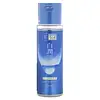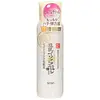What's inside
What's inside
 Key Ingredients
Key Ingredients

 Benefits
Benefits

 Concerns
Concerns

No concerns
 Ingredients Side-by-side
Ingredients Side-by-side

Water
Skin ConditioningDipropylene Glycol
HumectantGlycerin
HumectantPentylene Glycol
Skin ConditioningTranexamic Acid
AstringentButylene Glycol
HumectantCarbomer
Emulsion StabilisingCoix Lacryma-Jobi Ma-Yuen Seed Extract
Skin ConditioningDiglycerin
HumectantDisodium EDTA
Hydrolyzed Hyaluronic Acid
HumectantMagnesium Ascorbyl Phosphate
AntioxidantPhenoxyethanol
PreservativePolysorbate 20
EmulsifyingSaccharomyces/Coix Lacryma-Jobi Ma-Yuen Seed Ferment Filtrate
Skin ConditioningSodium Hyaluronate
HumectantStyrene/Vp Copolymer
Tocopherol
AntioxidantWater, Dipropylene Glycol, Glycerin, Pentylene Glycol, Tranexamic Acid, Butylene Glycol, Carbomer, Coix Lacryma-Jobi Ma-Yuen Seed Extract, Diglycerin, Disodium EDTA, Hydrolyzed Hyaluronic Acid, Magnesium Ascorbyl Phosphate, Phenoxyethanol, Polysorbate 20, Saccharomyces/Coix Lacryma-Jobi Ma-Yuen Seed Ferment Filtrate, Sodium Hyaluronate, Styrene/Vp Copolymer, Tocopherol
Water
Skin ConditioningButylene Glycol
HumectantGlycerin
HumectantMethyl Gluceth-10
EmulsifyingMilk Ferment
Skin ConditioningGlycine Max Seed Extract
Skin ConditioningSoy Protein Phthalate
EmollientRetinol
Skin ConditioningSoy Isoflavones
Skin ConditioningRetinyl Palmitate
Skin ConditioningCeramide Ng
Skin ConditioningStyrene/Acrylates Copolymer
PEG-20 Hydrogenated Castor Oil
EmulsifyingPEG-60 Hydrogenated Castor Oil
EmulsifyingSorbitan Isostearate
EmulsifyingAlcohol Denat.
AntimicrobialGlyceryl Caprylate
EmollientCarbomer
Emulsion StabilisingXanthan Gum
EmulsifyingGlycosyl Trehalose
Emulsion StabilisingCyclodextrin
AbsorbentCeramide AP
Skin ConditioningCeramide NP
Skin ConditioningPEG-5 Soy Sterol
EmulsifyingGlyceryl Caprylate/Caprate
EmollientTrilaureth-4 Phosphate
EmulsifyingPullulan
Polyquaternium-51
Skin ConditioningPolysorbate 20
EmulsifyingPolysorbate 80
EmulsifyingLecithin
EmollientHydrolyzed Starch
HumectantSodium Hydroxide
BufferingHydrogenated Lecithin
EmulsifyingPhenoxyethanol
PreservativeMethylparaben
PreservativeWater, Butylene Glycol, Glycerin, Methyl Gluceth-10, Milk Ferment, Glycine Max Seed Extract, Soy Protein Phthalate, Retinol, Soy Isoflavones, Retinyl Palmitate, Ceramide Ng, Styrene/Acrylates Copolymer, PEG-20 Hydrogenated Castor Oil, PEG-60 Hydrogenated Castor Oil, Sorbitan Isostearate, Alcohol Denat., Glyceryl Caprylate, Carbomer, Xanthan Gum, Glycosyl Trehalose, Cyclodextrin, Ceramide AP, Ceramide NP, PEG-5 Soy Sterol, Glyceryl Caprylate/Caprate, Trilaureth-4 Phosphate, Pullulan, Polyquaternium-51, Polysorbate 20, Polysorbate 80, Lecithin, Hydrolyzed Starch, Sodium Hydroxide, Hydrogenated Lecithin, Phenoxyethanol, Methylparaben
Ingredients Explained
These ingredients are found in both products.
Ingredients higher up in an ingredient list are typically present in a larger amount.
Butylene Glycol (or BG) is used within cosmetic products for a few different reasons:
Overall, Butylene Glycol is a safe and well-rounded ingredient that works well with other ingredients.
Though this ingredient works well with most skin types, some people with sensitive skin may experience a reaction such as allergic rashes, closed comedones, or itchiness.
Learn more about Butylene GlycolCarbomer is a polymer of acrylic acid. Its main role is to create a gel consistency.
A high amount of carbomer can cause pilling or balling up of products. Don't worry, most products contain 1% or less of carbomer.
Glycerin is already naturally found in your skin. It helps moisturize and protect your skin.
A study from 2016 found glycerin to be more effective as a humectant than AHAs and hyaluronic acid.
As a humectant, it helps the skin stay hydrated by pulling moisture to your skin. The low molecular weight of glycerin allows it to pull moisture into the deeper layers of your skin.
Hydrated skin improves your skin barrier; Your skin barrier helps protect against irritants and bacteria.
Glycerin has also been found to have antimicrobial and antiviral properties. Due to these properties, glycerin is often used in wound and burn treatments.
In cosmetics, glycerin is usually derived from plants such as soybean or palm. However, it can also be sourced from animals, such as tallow or animal fat.
This ingredient is organic, colorless, odorless, and non-toxic.
Glycerin is the name for this ingredient in American English. British English uses Glycerol/Glycerine.
Learn more about GlycerinPhenoxyethanol is a preservative that has germicide, antimicrobial, and aromatic properties. Studies show that phenoxyethanol can prevent microbial growth. By itself, it has a scent that is similar to that of a rose.
It's often used in formulations along with Caprylyl Glycol to preserve the shelf life of products.
Polysorbate 20 is made by combining ethoxylation of sorbitan, ethylene oxide, and lauric acid. It is a mild cleansing agent, surfactant, and emulsifier.
As a surfactant, it helps collect dirt and oils for washing. Emulsifiers prevent oils and water from separating.
Polysorbate 20 also adds scent to a product. Since it is made using sorbitol, it has a sweet scent. Sorbitol can also be found in fruits such as apples and peaches.
The lauric acid used to create Polysorbate 20 is often derived from coconuts.
Polysorbate 20 may not be fungal acne safe.
Learn more about Polysorbate 20Water. It's the most common cosmetic ingredient of all. You'll usually see it at the top of ingredient lists, meaning that it makes up the largest part of the product.
So why is it so popular? Water most often acts as a solvent - this means that it helps dissolve other ingredients into the formulation.
You'll also recognize water as that liquid we all need to stay alive. If you see this, drink a glass of water. Stay hydrated!
Learn more about Water